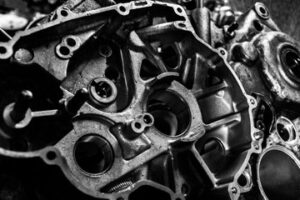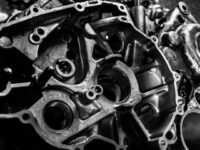Die Casting and Die Cavity Venting
Die casting is a process used to make metal parts, such as tools. There are several different types of dies available, including side-core dies, which allow the external undercut to be molded into the die. The material used in a die can also vary, from high-grade tool steel to low-carbon steel. Low-carbon steels tend to be more corrosion-resistant. Vanadium and tungsten are also common metals that can be used in dies.
Die casting is a manufacturing process in which metal is melted and then forced into a mold cavity under pressure. This process produces parts with excellent surface finishes, tight dimensional tolerances, and a good microstructure. After the casting has reached a final shape, the die halves are opened, and the part is ejected. The amount of time required to remove the casting from the die depends on its metal properties and size.
During the casting process, a lubricant is sprayed into the die cavity to make sure the part will release cleanly. The lubricant is mixed with water and sprayed onto the heated steel die. Once the metal enters the die cavity, it must cool sufficiently to solidify into the desired shape. The cooling time depends on the metal, the thickness of the casting, and the complexity of the design.
Several variations of die-casting operations have been developed over the years. One of these is the Acura process, which combines stable fill with directional solidification, high-pressure injection, and fast cycle times. The Acura process also incorporates thermal analysis and indirect squeezing. It also includes double pistons that increase pressure on a partially solidified shot.
When casting a metal object, the die cavity is crucial. It must be able to contain the molten metal easily yet be able to remove the solidified casting after it has been cast. Moreover, the cavity should be able to accommodate any complex features on the part. If it cannot, it must be fitted with additional die pieces. Normally, die inserts slide into the cavity through the side of the die. This process is referred to as side-action or slide casting.
A die cavity must be properly cooled and cleaned after casting to avoid cracks. Cracks are irregular patterns visible on the die-casting surface and are caused by the residual stress from the casting process. External forces can also cause deformations in the die cavity, such as during the part-ejection phase or during the cutting process.
The geometry of the die cavity is an essential component in the 3D FEM simulation of hot forging. It influences the precision and efficiency of the simulation and helps solve the dynamic boundary condition. Different methods of describing the die cavity are available, including the dot matrix method, analytic method, parametric surface method, and solid modeling.
There are a number of design considerations when it comes to dying cavities. Considering the size of a die’s cavities, it is important to consider the number of parts the cavity will hold. Some dies may contain several parts, and if this is the case, the die cavity design may need to be modified accordingly.
One of the most important considerations in die cavity design is the parting line. This is the place where the die halves meet. It is important to ensure that the parting lines are smooth and parallel to each other. Other important considerations include the location of ejector pins, which are steel bars that can be removed from the tooling after casting is complete. The die designer will be able to offer advice on where these pins should be located.
The draft must also be considered. The draft must be included on the parallel surfaces of the cavity. Otherwise, ejection will be difficult, and the cast may be damaged. The amount of draft required varies from design to design, with outside walls requiring small drafts and inside walls requiring larger drafts. Also, the thickness of the wall must be taken into account.






